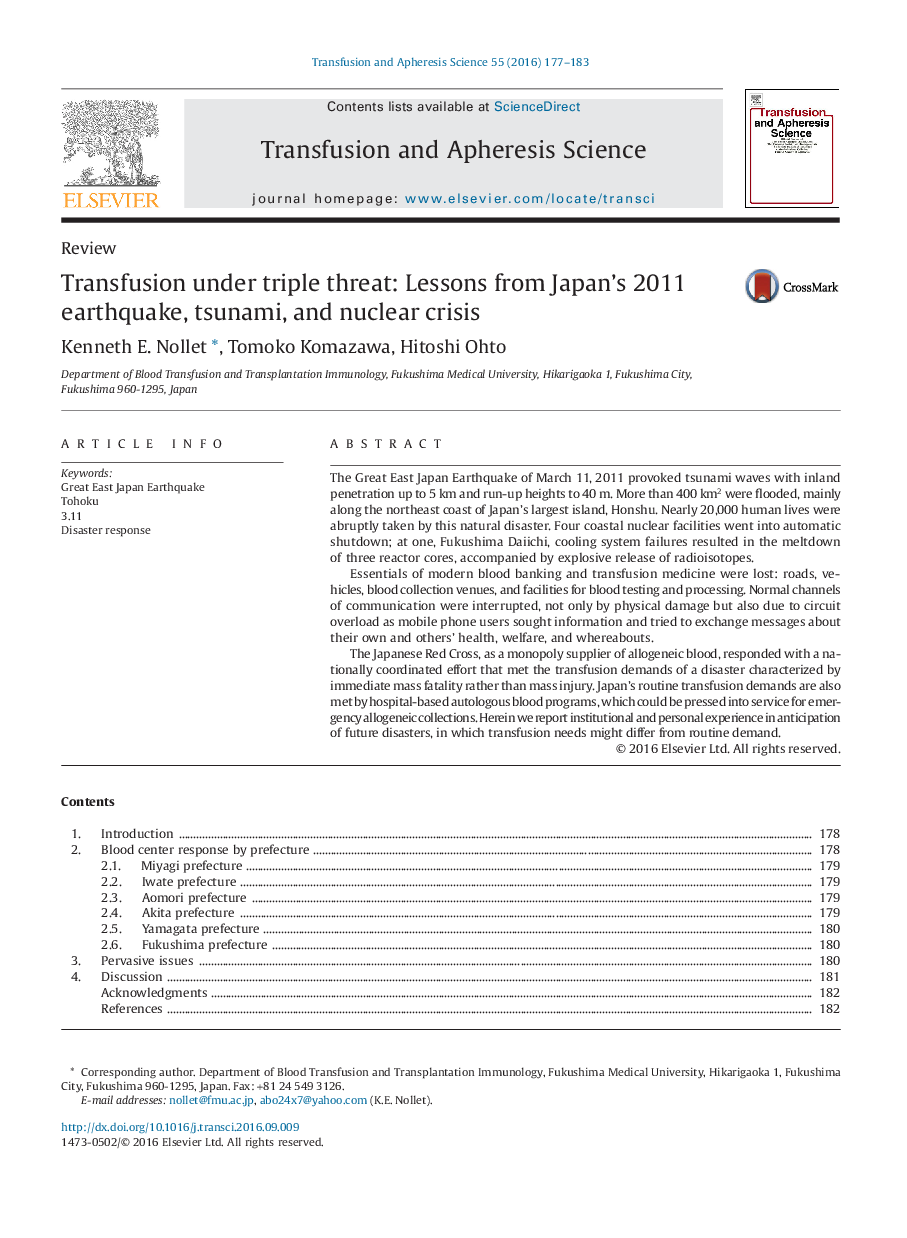| کد مقاله | کد نشریه | سال انتشار | مقاله انگلیسی | نسخه تمام متن |
|---|---|---|---|---|
| 5664739 | 1407719 | 2016 | 7 صفحه PDF | دانلود رایگان |
The Great East Japan Earthquake of March 11, 2011 provoked tsunami waves with inland penetration up to 5âkm and run-up heights to 40âm. More than 400âkm2 were flooded, mainly along the northeast coast of Japan's largest island, Honshu. Nearly 20,000 human lives were abruptly taken by this natural disaster. Four coastal nuclear facilities went into automatic shutdown; at one, Fukushima Daiichi, cooling system failures resulted in the meltdown of three reactor cores, accompanied by explosive release of radioisotopes.Essentials of modern blood banking and transfusion medicine were lost: roads, vehicles, blood collection venues, and facilities for blood testing and processing. Normal channels of communication were interrupted, not only by physical damage but also due to circuit overload as mobile phone users sought information and tried to exchange messages about their own and others' health, welfare, and whereabouts.The Japanese Red Cross, as a monopoly supplier of allogeneic blood, responded with a nationally coordinated effort that met the transfusion demands of a disaster characterized by immediate mass fatality rather than mass injury. Japan's routine transfusion demands are also met by hospital-based autologous blood programs, which could be pressed into service for emergency allogeneic collections. Herein we report institutional and personal experience in anticipation of future disasters, in which transfusion needs might differ from routine demand.
Journal: Transfusion and Apheresis Science - Volume 55, Issue 2, October 2016, Pages 177-183
